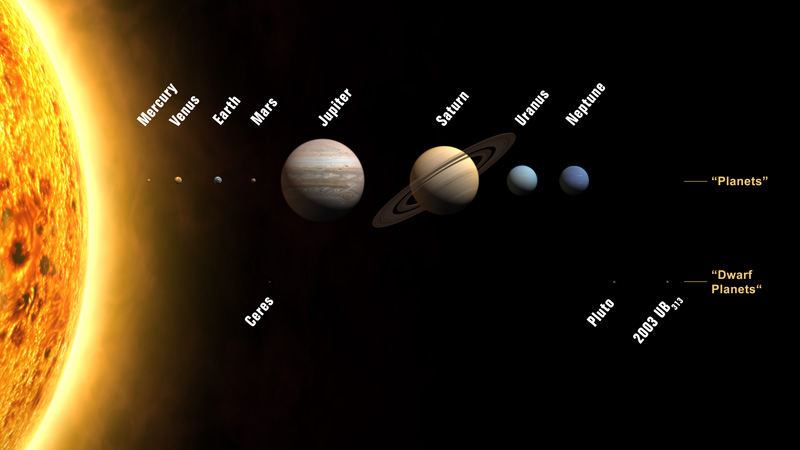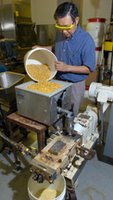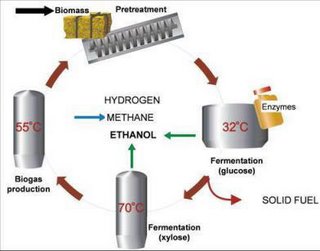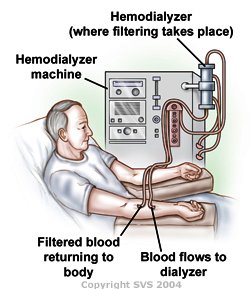Global Warming--Not Just an Orthodoxy, It's An Adventure!
 The theory of Catastrophic Anthropogenic Global Warming (CAGW) has become accepted orthodoxy by much of the general public, also by those whose income is based on the orthodoxy (think high priests), and other politicians.
The theory of Catastrophic Anthropogenic Global Warming (CAGW) has become accepted orthodoxy by much of the general public, also by those whose income is based on the orthodoxy (think high priests), and other politicians. But something interesting happened on the way to the anthropogenic climatic end of the world. The oceans started to cool. The satellite readings of tropospheric temperature trends diverged from surface temperature measurements. And people who are savvy in mathematics and statistics started looking closely at the sloppy methodology of the GCM multi-decadal trend climate modelers. That is what is happening over at Climate Audit blog right now. They are having a raucous--no, an adventurous--debate over the methodology of James Hansen's recent "rushed to press to beat the elections" paper in PNAC.
If you really want to think about the underpinnings of CAGW, and not simply go along with the crowd, go here and here, and read the articles and comments. If you just want to believe what everyone else believes, do not bother. It will not be worth your time and mental distress.
But if you believe that science should be a mental adventure, as I do, the issue is far from settled. In fact, the debate is only just beginning. Follow the links to Climate Science and Climate Audit and you will find fascinating discussions--the back and forth of genuine debate--that has been lost from more mainstream discussions of orthodox political views of climate.
If you browse the sidebar of Al Fin blog, you will find several other links to unorthodox views of the climate. True believer sites like realclimate etc. are a dime a dozen, and censor their comments closely to shut out heretics and infidels. If you are a special type of person who enjoys a rowdy debate the way science was meant to be, try something different.
Here is one of the reasons Hansen felt he needed to convince his friends to publish his rather confused article so hastily: storm clouds on the horizon.
The “hockey stick” was completely and thoroughly broken once and for all in 2006. Several years ago, two Canadian researchers tore apart the statistical foundation for the hockey stick. In 2006, both the National Academy of Sciences and an independent researcher further refuted the foundation of the “hockey stick.” http://epw.senate.gov/pressitem.cfm?party=rep&id=257697
The National Academy of Sciences report reaffirmed the existence of the Medieval Warm Period from about 900 AD to 1300 AD and the Little Ice Age from about 1500 to 1850. Both of these periods occurred long before the invention of the SUV or human industrial activity could have possibly impacted the Earth’s climate. In fact, scientists believe the Earth was warmer than today during the Medieval Warm Period, when the Vikings grew crops in Greenland.
Climate alarmists have been attempting to erase the inconvenient Medieval Warm Period from the Earth’s climate history for at least a decade. David Deming, an assistant professor at the University of Oklahoma’s College of Geosciences, can testify first hand about this effort. Dr. Deming was welcomed into the close-knit group of global warming believers after he published a paper in 1995 that noted some warming in the 20th century. Deming says he was subsequently contacted by a prominent global warming alarmist and told point blank “We have to get rid of the Medieval Warm Period.” When the “Hockey Stick” first appeared in 1998, it did just that.
....One of the ways alarmists have pounded this mantra of “consensus” on global warming into our pop culture is through the use of computer models which project future calamity. But the science is simply not there to place so much faith in scary computer model scenarios which extrapolate the current and projected buildup of greenhouse gases in the atmosphere and conclude that the planet faces certain doom.
Dr. Vincent Gray, a research scientist and a 2001 reviewer with the UN’s Intergovernmental Panel on Climate Change (IPCC) has noted, “The effects of aerosols, and their uncertainties, are such as to nullify completely the reliability of any of the climate models.”
Earlier this year, the director of the International Arctic Research Center in Fairbanks Alaska, testified to Congress that highly publicized climate models showing a disappearing Arctic were nothing more than “science fiction.” In fact, after years of hearing about the computer generated scary scenarios about the future of our planet, I now believe that the greatest climate threat we face may be coming from alarmist computer models.
This threat is originating from the software installed on the hard drives of the publicity seeking climate modelers.
It is long past the time for us to separate climate change fact from hysteria.
....Here is a quote from Newsweek magazine:
“There are ominous signs that the Earth’s weather patterns have begun to change dramatically and that these changes may portend a drastic decline in food production– with serious political implications for just about every nation on Earth.”
A headline in the New York Times reads: “Climate Changes Endanger World’s Food Output.” Here is a quote from Time Magazine:
“As they review the bizarre and unpredictable weather pattern of the past several years, a growing number of scientists are beginning to suspect that many seemingly contradictory meteorological fluctuations are actually part of a global climatic upheaval.”
All of this sounds very ominous. That is, until you realize that the three quotes I just read were from articles in 1975 editions of Newsweek Magazine and The New York Times, and Time Magazine in 1974. http://time-proxy.yaga.com/time/archive/printout/0,23657,944914,00.html
They weren’t referring to global warming; they were warning of a coming ice age.
Let me repeat, all three of those quotes were published in the 1970’s and warned of a coming ice age.
In addition to global cooling fears, Time Magazine has also reported on global warming. Here is an example:
“[Those] who claim that winters were harder when they were boys are quite right… weathermen have no doubt that the world at least for the time being is growing warmer.”
Before you think that this is just another example of the media promoting Vice President Gore’s movie, you need to know that the quote I just read you from Time Magazine was not a recent quote; it was from January 2, 1939.
Yes, in 1939. Nine years before Vice President Gore was born and over three decades before Time Magazine began hyping a coming ice age and almost five decades before they returned to hyping global warming.
Time Magazine in 1951 pointed to receding permafrost in Russia as proof that the planet was warming.
In 1952, the New York Times noted that the “trump card” of global warming “has been the melting glaciers.”
BUT MEDIA COULD NOT DECIDE BETWEEN WARMING OR COOLING SCARES
There are many more examples of the media and scientists flip-flopping between warming and cooling scares.
Here is a quote from the New York Times reporting on fears of an approaching ice age.
“Geologists Think the World May be Frozen Up Again.”
That sentence appeared over 100 years ago in the February 24, 1895 edition of the New York Times.
Let me repeat. 1895, not 1995.
A front page article in the October 7, 1912 New York Times, just a few months after the Titanic struck an iceberg and sank, declared that a prominent professor “Warns Us of an Encroaching Ice Age.”
The very same day in 1912, the Los Angeles Times ran an article warning that the “Human race will have to fight for its existence against cold.” An August 10, 1923 Washington Post article declared: “Ice Age Coming Here.”
By the 1930’s, the media took a break from reporting on the coming ice age and instead switched gears to promoting global warming:
“America in Longest Warm Spell Since 1776; Temperature Line Records a 25-year Rise” stated an article in the New York Times on March 27, 1933. The media of yesteryear was also not above injecting large amounts of fear and alarmism into their climate articles.
An August 9, 1923 front page article in the Chicago Tribune declared:
“Scientist Says Arctic Ice Will Wipe Out Canada.” The article quoted a Yale University professor who predicted that large parts of Europe and Asia would be “wiped out” and Switzerland would be “entirely obliterated.”
A December 29, 1974 New York Times article on global cooling reported that climatologists believed “the facts of the present climate change are such that the most optimistic experts would assign near certainty to major crop failure in a decade.”
The article also warned that unless government officials reacted to the coming catastrophe, “mass deaths by starvation and probably in anarchy and violence” would result. In 1975, the New York Times reported that “A major cooling [was] widely considered to be inevitable.” These past predictions of doom have a familiar ring, don’t they? They sound strikingly similar to our modern media promotion of former Vice president’s brand of climate alarmism.
After more than a century of alternating between global cooling and warming, one would think that this media history would serve a cautionary tale for today’s voices in the media and scientific community who are promoting yet another round of eco-doom.
Much of the 100-year media history on climate change that I have documented here today can be found in a publication titled “Fire and Ice” from the Business and Media Institute. http://www.businessandmedia.org/specialreports/2006/fireandice/fireandice_timeswarns.asp
MEDIA COVERAGE IN 2006
Which raises the question: Has this embarrassing 100-year documented legacy of coverage on what turned out to be trendy climate science theories made the media more skeptical of today’s sensational promoters of global warming?
You be the judge.
On February 19th of this year, CBS News’s “60 Minutes” produced a segment on the North Pole. The segment was a completely one-sided report, alleging rapid and unprecedented melting at the polar cap. http://www.cbsnews.com/stories/2006/02/16/60minutes/main1323169.shtml
It even featured correspondent Scott Pelley claiming that the ice in Greenland was melting so fast, that he barely got off an ice-berg before it collapsed into the water.
“60 Minutes” failed to inform its viewers that a 2005 study by a scientist named Ola Johannessen and his colleagues showing that the interior of Greenland is gaining ice and mass and that according to scientists, the Arctic was warmer in the 1930’s than today.
On March 19th of this year “60 Minutes” profiled NASA scientist and alarmist James Hansen, who was once again making allegations of being censored by the Bush administration. http://www.cbsnews.com/stories/2006/03/17/60minutes/main1415985.shtml
In this segment, objectivity and balance were again tossed aside in favor of a one-sided glowing profile of Hansen.
The “60 Minutes” segment made no mention of Hansen’s partisan ties to former Democrat Vice President Al Gore or Hansen’s receiving of a grant of a quarter of a million dollars from the left-wing Heinz Foundation run by Teresa Heinz Kerry. There was also no mention of Hansen’s subsequent endorsement of her husband John Kerry for President in 2004. http://www.columbia.edu/~jeh1/dai_complete.pdf
Many in the media dwell on any industry support given to so-called climate skeptics, but the same media completely fail to note Hansen’s huge grant from the left-wing Heinz Foundation. http://www.heinzawards.net/speechDetail.asp?speechID=6
The foundation’s money originated from the Heinz family ketchup fortune. So it appears that the media makes a distinction between oil money and ketchup money.
“60 Minutes” also did not inform viewers that Hansen appeared to concede in a 2003 issue of Natural Science that the use of “extreme scenarios" to dramatize climate change “may have been appropriate at one time” to drive the public's attention to the issue. http://naturalscience.com/ns/articles/01-16/ns_jeh6.html
Why would “60 Minutes” ignore the basic tenets of journalism, which call for objectivity and balance in sourcing, and do such one-sided segments? The answer was provided by correspondent Scott Pelley. Pelley told the CBS News website that he justified excluding scientists skeptical of global warming alarmism from his segments because he considers skeptics to be the equivalent of “Holocaust deniers.” http://www.cbsnews.com/blogs/2006/03/22/publiceye/entry1431768.shtml
This year also saw a New York Times reporter write a children’s book entitled” The North Pole Was Here.” The author of the book, New York Times reporter Andrew Revkin, wrote that it may someday be “easier to sail to than stand on” the North Pole in summer. So here we have a very prominent environmental reporter for the New York Times who is promoting aspects of global warming alarmism in a book aimed at children. And so on.
Why is the media in the catastrophe business? Would not reporting the news be enough? Apparently not. Reporting the news does not provide the media insiders enough clout. They have decided to shade the news a bit--okay, a lot. Expect a lot more of this type of thing from the media, until things start going more the way they like politically.
Labels: CAGW, climate, hockey stick, IPCC



















